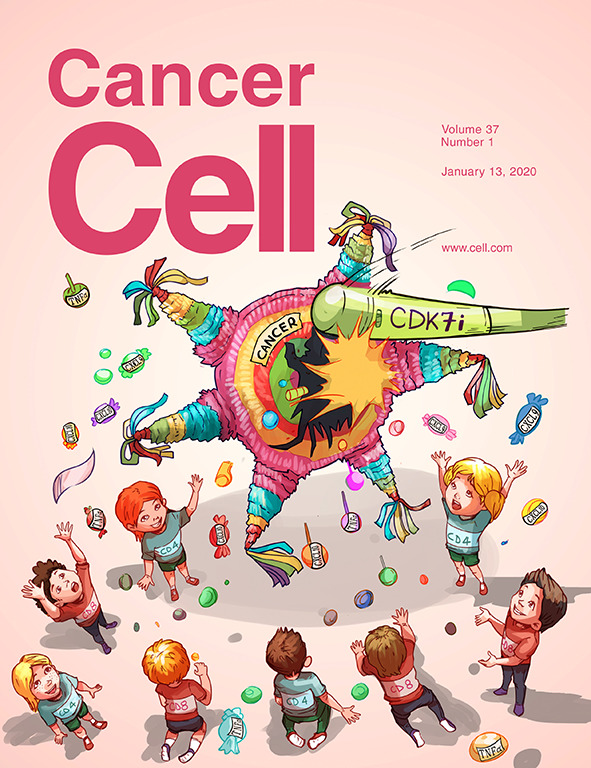人类和小鼠肺腺癌前体的空间和多组学分析显示,TIM-3可能是癌前阻断的靶点
IF 44.5
1区 医学
Q1 CELL BIOLOGY
引用次数: 0
摘要
肿瘤微环境如何塑造肺腺癌(LUAD)的癌前进化仍然知之甚少。114种人类LUAD和LUAD前体的空间免疫分析显示,随着LUAD前体的进展,适应性反应逐渐增加,先天免疫反应相对减少。免疫逃避特征使免疫反应模式在不同阶段保持一致。TIM-3-high特征在LUAD癌前病变中丰富,在晚期减少。此外,来自5种小鼠模型的LUAD和LUAD前体标本的单细胞RNA测序(scRNA-seq)和空间免疫和转录组学分析证实了LUAD癌前病变的高TIM-3特征。体内TIM-3阻断在癌前期,而不是在晚期,降低肿瘤负荷。抗tim -3治疗与抗原呈递增强、T细胞活化和M1/M2巨噬细胞比例增加有关。这些结果强调了LUAD癌前发展过程中先天和适应性免疫反应/逃避的协调,并提示TIM-3可能是LUAD癌前阻断的潜在靶点。本文章由计算机程序翻译,如有差异,请以英文原文为准。

Spatial and multiomics analysis of human and mouse lung adenocarcinoma precursors reveals TIM-3 as a putative target for precancer interception
How tumor microenvironment shapes lung adenocarcinoma (LUAD) precancer evolution remains poorly understood. Spatial immune profiling of 114 human LUAD and LUAD precursors reveals a progressive increase of adaptive response and a relative decrease of innate immune response as LUAD precursors progress. The immune evasion features align the immune response patterns at various stages. TIM-3-high features are enriched in LUAD precancers, which decrease in later stages. Furthermore, single-cell RNA sequencing (scRNA-seq) and spatial immune and transcriptomics profiling of LUAD and LUAD precursor specimens from 5 mouse models validate high TIM-3 features in LUAD precancers. In vivo TIM-3 blockade at precancer stage, but not at advanced cancer stage, decreases tumor burden. Anti-TIM-3 treatment is associated with enhanced antigen presentation, T cell activation, and increased M1/M2 macrophage ratio. These results highlight the coordination of innate and adaptive immune response/evasion during LUAD precancer evolution and suggest TIM-3 as a potential target for LUAD precancer interception.
求助全文
通过发布文献求助,成功后即可免费获取论文全文。
去求助
来源期刊

Cancer Cell
医学-肿瘤学
CiteScore
55.20
自引率
1.20%
发文量
179
审稿时长
4-8 weeks
期刊介绍:
Cancer Cell is a journal that focuses on promoting major advances in cancer research and oncology. The primary criteria for considering manuscripts are as follows:
Major advances: Manuscripts should provide significant advancements in answering important questions related to naturally occurring cancers.
Translational research: The journal welcomes translational research, which involves the application of basic scientific findings to human health and clinical practice.
Clinical investigations: Cancer Cell is interested in publishing clinical investigations that contribute to establishing new paradigms in the treatment, diagnosis, or prevention of cancers.
Insights into cancer biology: The journal values clinical investigations that provide important insights into cancer biology beyond what has been revealed by preclinical studies.
Mechanism-based proof-of-principle studies: Cancer Cell encourages the publication of mechanism-based proof-of-principle clinical studies, which demonstrate the feasibility of a specific therapeutic approach or diagnostic test.
 求助内容:
求助内容: 应助结果提醒方式:
应助结果提醒方式:


